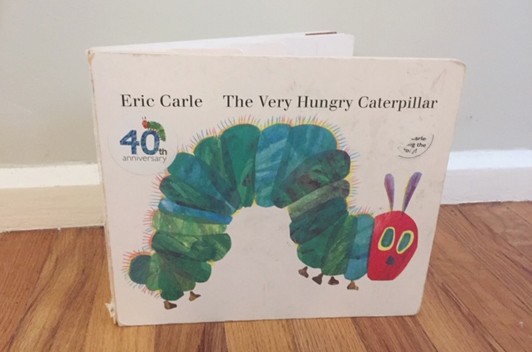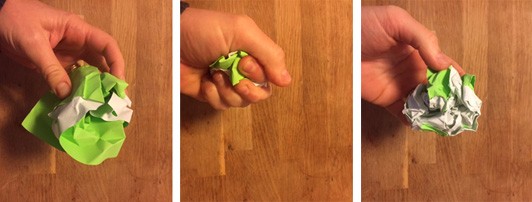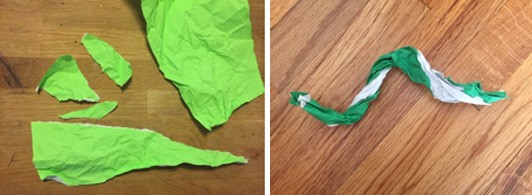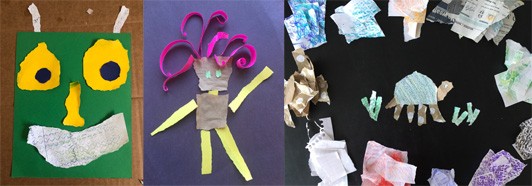Collage Storytime
During the past several months, we have been developing our virtual art-making programs and asking ourselves how we can continue to explore stories and materials with school and community groups when we aren’t working with them in-person. In this post we will share how we developed a multi-sensory, virtual story time with the goal of inspiring collage-making at home and in the classroom.

For our first collage storytime, we read The Very Hungry Caterpillar. With its tactile book design, rhythmic story, and bright illustrations, it is always an engaging read-aloud. In addition, Eric Carle’s collage illustrations, with his highly textured painted papers, provide inspiration for collage making. In the past we started our collage workshops with close observations of Carle’s illustrations; for our re-formatted virtual program we were excited to start with a read-aloud incorporating material exploration along the way. Here’s what we focused on as we read the story:
1) SHAPE: When we were developing the program, we noticed how many circles appear in Carle’s illustrations, from the die-cuts in the food the caterpillar eats, to the shape of the sun and moon. During the read-aloud, we invited children to find circles as we read and use their arms and hands to create circles when they saw them on the page. In this way, participants were engaged in close looking with a movement-based response. Participants began to notice the shapes that Carle frequently used to help tell the story, and it was great to see their engagement throughout the storytime.

2) TEXTURE: We added a sound element to our storytelling, inviting participants to make a crunching noise by crumpling paper whenever the caterpillar ate (We asked participants to have paper handy). While the papers helped us incorporate sound into the story, crumpling the paper also added texture, making them wrinkled and bumpy. After all of our crunching along with the caterpillar, we invited children to flatten the paper out and observe the textures they created.

3) FORM: Participants were invited to tear or crumple the paper into a caterpillar shape. Many chose to make a three-dimensional form by crumpling and twisting their paper. These sculptural caterpillars crawled and wiggled their way across screens throughout the read-aloud.
After reading the story and exploring shape, texture, and form with paper, we invited children to continue to tell stories with their papers by:
- Changing the shape of paper by ripping, cutting, folding, curling, and crunching.
- Arranging and combining their papers to create scenes and characters.
- Attaching their papers together and to a surface with glue.
When we facilitated this process with young children (ages 4 and 5) we were interested to see how engaged they were in various parts of this process, and how they transitioned from the multi-sensory storytime to collage making. Some children continued to tell stories about the Very Hungry Caterpillar, while others chose to tell a story about something completely different. All used their paper in a variety of ways; some folded and crunched the paper into three-dimensional forms that could be moved through the air, others tore the paper and arranged them on a background, and still others used scissors to cut shapes before gluing them to their page. The variety of responses, all related to telling a story or developing a character using paper, gave us confidence that our sensory explorations during storytime helped scaffold the children’s experience with collage.

Here are some collages we made earlier in the summer inspired by ripping, curling and crunching paper. Check out our blog post about tearing paper as a starting point for creativity.
For more information on Eric Carle’s collage process, check out his website.
We look forward to continuing to explore picture books and materials, virtually and in-person in the future. You can find out more about our current virtual program offerings on the Museum website.

